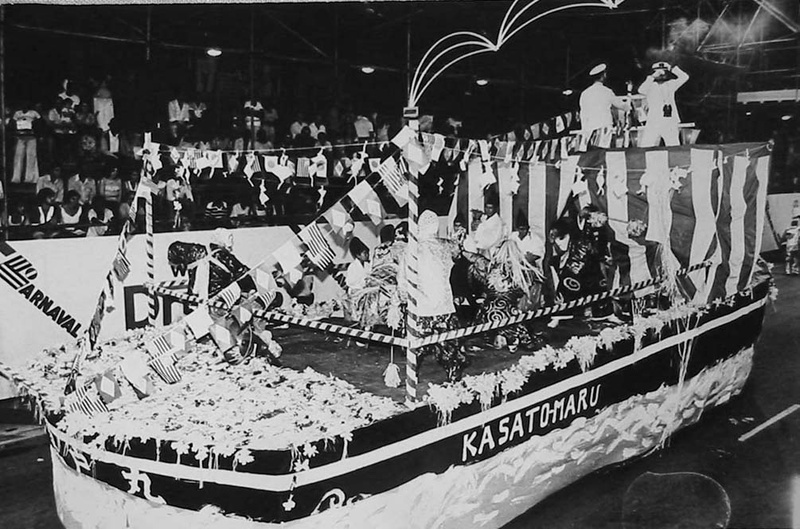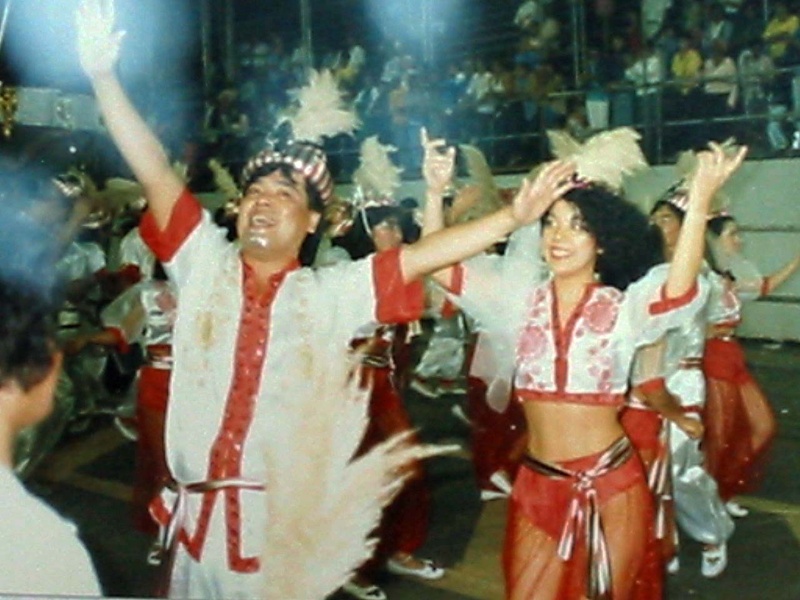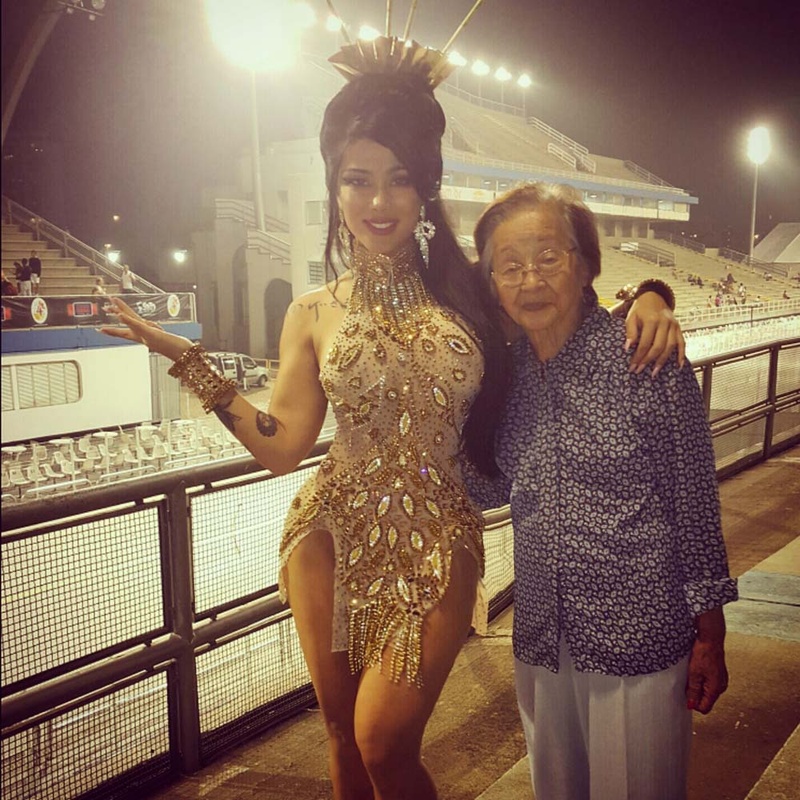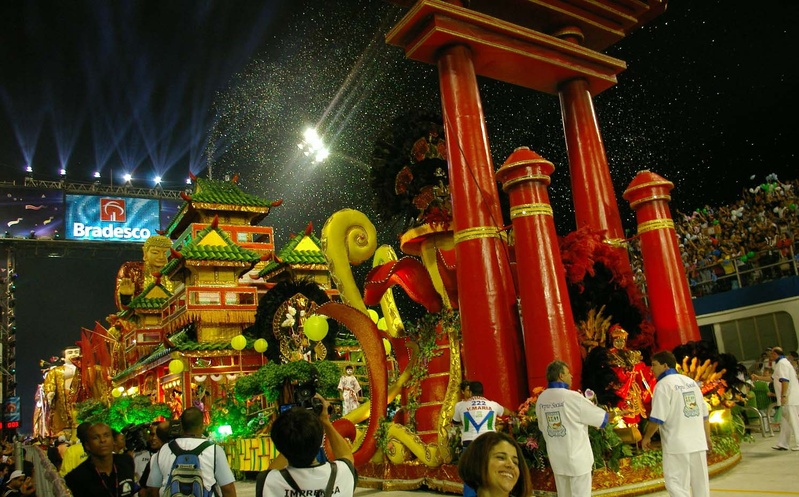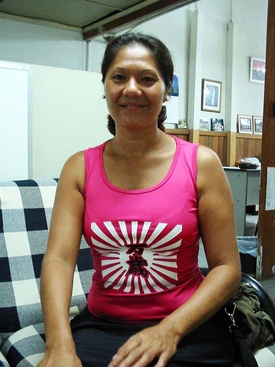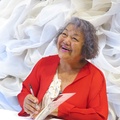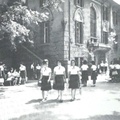In the first place, there is a common understanding among Brazilians that nothing could be more incompatible than "Japonês" (Japanese) and "samba." For example, the author played percussion in several samba teams in the city of Sao Paulo for about 10 years, and felt frustrated when he heard a sambista (samba player) say "Japonês entrou no samba" (a Japanese has entered the samba) when the music was out of sync. At first, he assumed that they were talking about him, but in fact, he did not. He soon realized that it was a Portuguese idiom used when someone disrupts the rhythm. Of course, it is a common slang that cannot be found in any dictionary.
In the world of soccer, where there are very few Japanese players, there is a similar idiom: "Japanese people have legs like sticks." In the world of Brazilian soccer, where a flexible and free touch on the ball is a selling point, "stick-like legs" means fatally stiff movements. This is probably a verbalization of the common sense of the Brazilian people, who see this as "something that doesn't suit the serious and rigid Japanese."
First time samba challenger Yamamoto
The first Japanese immigrant to fully participate in an Escola de Samba (a samba team) was Masayoshi Yamamoto (deceased), known as "Joan Japonaise."
According to his daughter Tulia (42, second generation) who was interviewed in 2003, "He was a really bohemian person (who lived a free and easy life), and when he went to dance samba he wouldn't come back until the morning."
To give you an idea of how bohemian he was, even his own daughter doesn't have a single photo of him, and doesn't know his date of birth, his place of origin in Japan, the date he arrived in Brazil, or even his date of death. According to his daughter's memory, "My father must have started samba sometime during the war."
Nowadays, the Liberdade district of Sao Paulo is known as a "piece of Japan" and an "Oriental town," but this is a story from after the war. It used to be a place closely related to black people. Liberdade Square was once a place where black slaves were hanged, called "Largo da Forca (Hanging Square)." The square's name has a paradoxical meaning: "Be free (liberdade) forever in the afterlife."
About 500 meters down the hill from the square is the Baixada Griceiro district, home to an old black community that existed before the war. The oldest school in São Paulo, Escola de Samba "Labapes," founded in 1937, is still located there today.
Yamamoto immigrated with his parents at the age of six, and like many other Japanese immigrants, he worked as a laundryman in the Oriental District during the war. The laundry business, which could be started by just the family without a lot of money and did not require difficult conversations, was a welcome occupation for Japanese immigrants not only in Brazil but also in Argentina and North America.
After the war, many families who decided to send their children to university in São Paulo left the countryside and relied on friends or seniors to find this profession. At a time when many Japanese people loved to sing Japanese pop songs and folk songs with a touch of nostalgia, Yamamoto became absorbed in black music.
Japanese culture rejected as a different culture
According to Tulia, "The black community at that time was exclusive, and even local white people had a hard time being accepted into the community. I think it was especially difficult for my father, who was born in Japan, at first."
Escolas de Samba de Sao Paulo (Capital) (Wilson Rodrigues de Moraes, Conseho Estadual de Artes e Ciencias Humanas, 1978), which describes the history of the samba team in the city of Sao Paulo, states that "before 1967, the escolas in Sao Paulo were almost entirely staffed by poor blacks and mulattos (people of mixed black and Arab descent)" (page 77).
The Getúrio Vargas dictatorship, which came to power in 1930, strongly promoted a policy of nationalism, fostering Brazilian consciousness and strengthening national identity by promoting Brazil's unique culture and sports, which were different from those of the West.
Brazil was a new country that was banned from cultural activities such as publishing and newspaper production as a "colony" until it gained independence in 1822, and even after independence it was ruled by the emperor until 1888. During this period, there was a great deal of trial and error in the search for and nurturing of a unique culture within the country.
In 1937, President Vargas issued a presidential decree stating that "samba schools must dramatize historical, moral or patriotic themes in their parades." As a result, samba, which was previously just a local music of Rio, a folk music brought over from the African continent by black slaves, came to be protected by the regime and developed into "national music."
Similarly, President Vargas organized a professional union for professional soccer players and promoted it through the establishment of labor laws.
The flip side of awakening nationalism among the people was that the government implemented forced assimilation policies against foreign immigrants, especially those from the Axis powers. For example, in the case of Japanese immigrants, from before the war through wartime, it took a series of measures, such as ceasing publication of Japanese-language newspapers, prohibiting the use of the Japanese language in public places, closing down Japanese language schools, and requiring police permission for Japanese immigrants to move out of town.
In other words, Japanese culture was clearly defined as a "foreign culture" that was incompatible with Brazil. In those tough times, Turia's father enjoyed a bohemian lifestyle, frequenting the escola every night.
For Japanese immigrants and Japanese descendants, self-perception is "serious," "hardworking," and "honest," and they have a strong impression of samba as "naked dancing" and "kurombo wild parties," so they rarely participated in it. Although Japanese immigrants have incorporated Brazilian cuisine and Portuguese into their lives out of necessity, they have distanced themselves from samba, seeing it as the most exotic of Brazilian culture.
My father was too bohemian and my mother abandoned him
When I asked Evaristo de Carvalho (77 years old), who has been presenting the radio program "Region Nacional de Samba" for 27 years and is a living dictionary in the world of samba, in an interview in 2003, he gave me his stamp of approval, saying, "Joao Japonaise was the first Japanese sambista. There's no doubt about that. At that time, there were no other Japanese people who joined the escola." He added, "He was particularly good at the cuicca and tambourine."
Turia's mother is from the northeastern state of Piauí and has black ancestry. At the time, it was very rare for Japanese immigrants to marry black people, and it's still not common today. There was an unspoken understanding in the Japanese community at the time that "people who married black people could not enter the Japanese colony." This was especially true during and after the war.
The daughter recalled, "I heard that when my father married my mother, all of his relatives on his father's side were against it. At that time, Escola was a place where only black people gathered, and Japanese people avoided it." Yamamoto-san seems to have been an eccentric person who had little contact with his compatriots, even though he lived in the Liberdade district, which was full of Japanese immigrants.
According to his daughter, "My father was too bohemian, so my mother got fed up with him and divorced him." When she was 14 years old, around 1975, her father moved to the coastal city of Guaruja and began living with another black woman. Since then, they became estranged, and she "heard a rumor that he died around 1999."
The life of the first Japanese Samvista is so unconventional that it still receives little attention.
Turia herself is a rare Japanese person who has been attending Bye Bye, one of the oldest escolas in São Paulo, located in the Bella Vista district next to Liberdade, since she was a child.
© 2015 Masayuki Fukasawa


